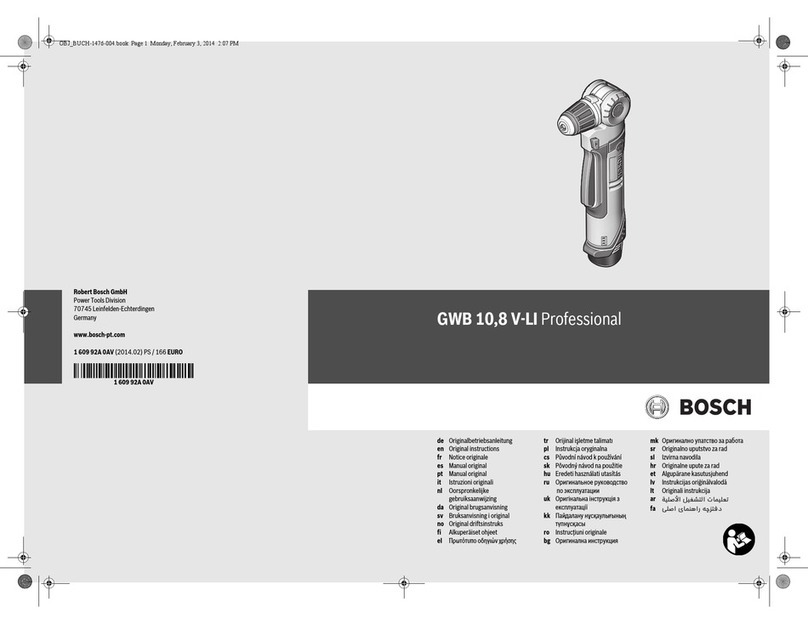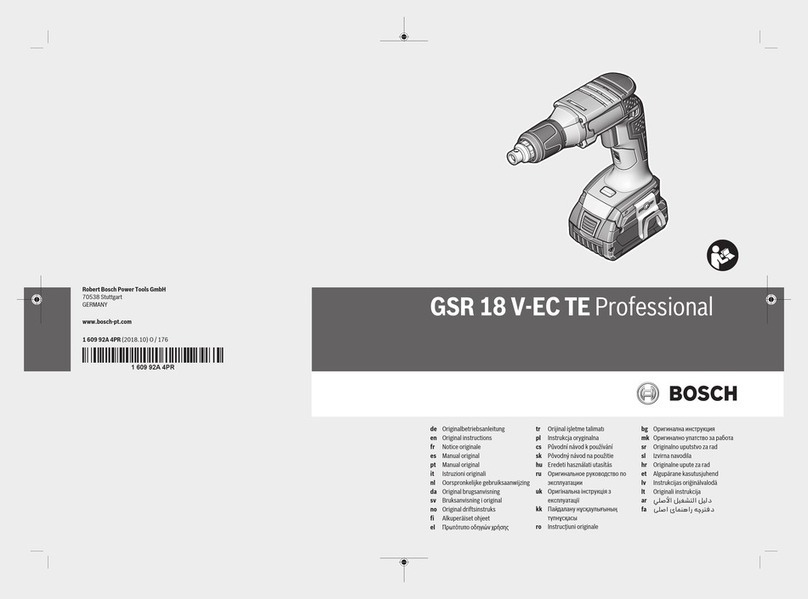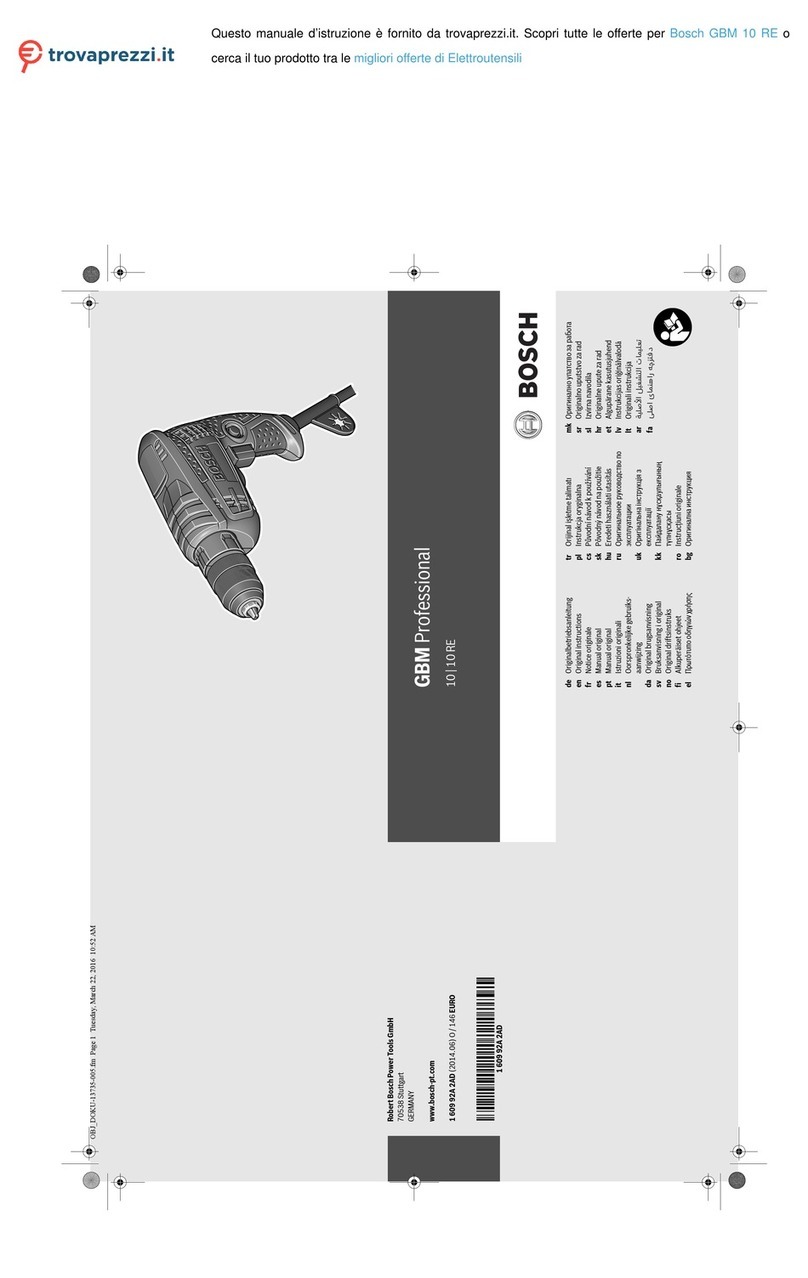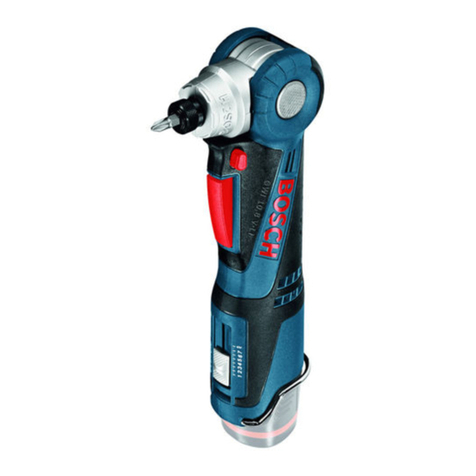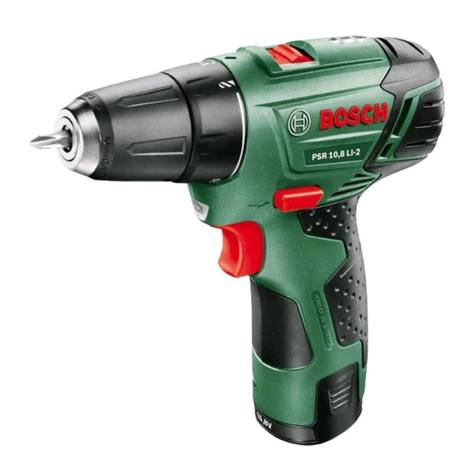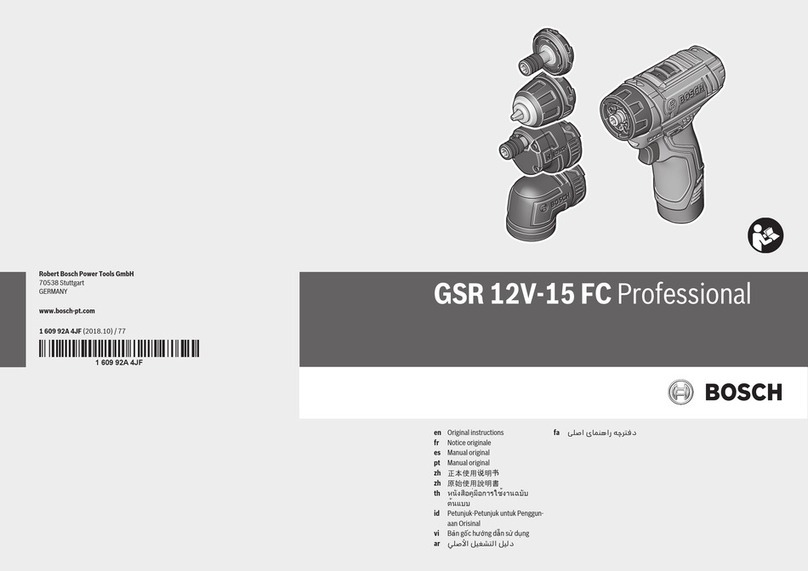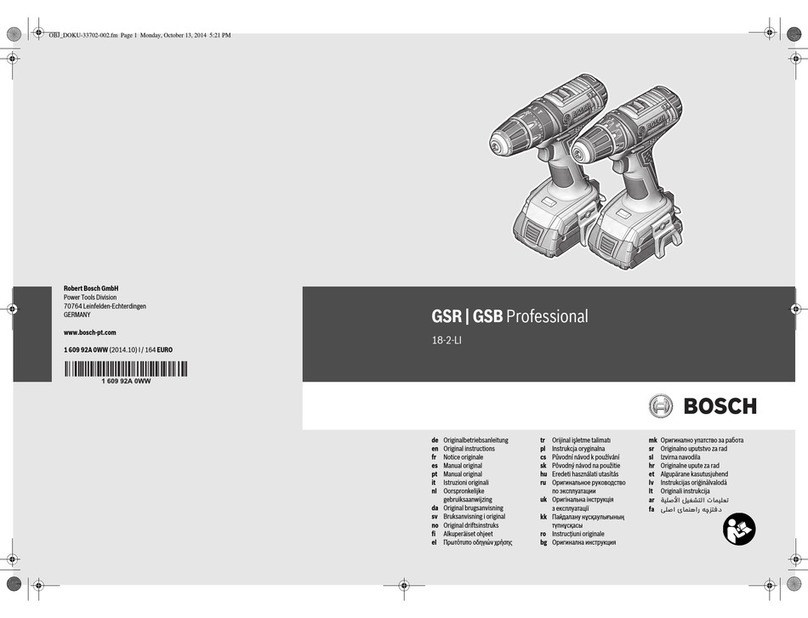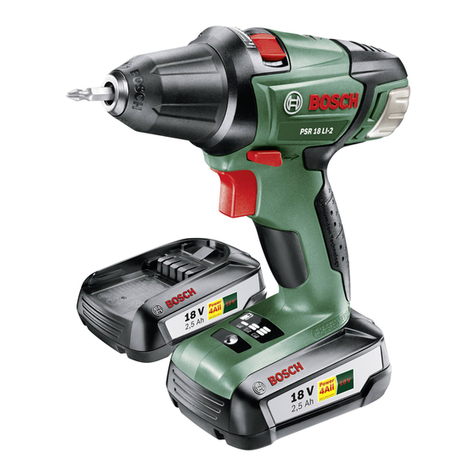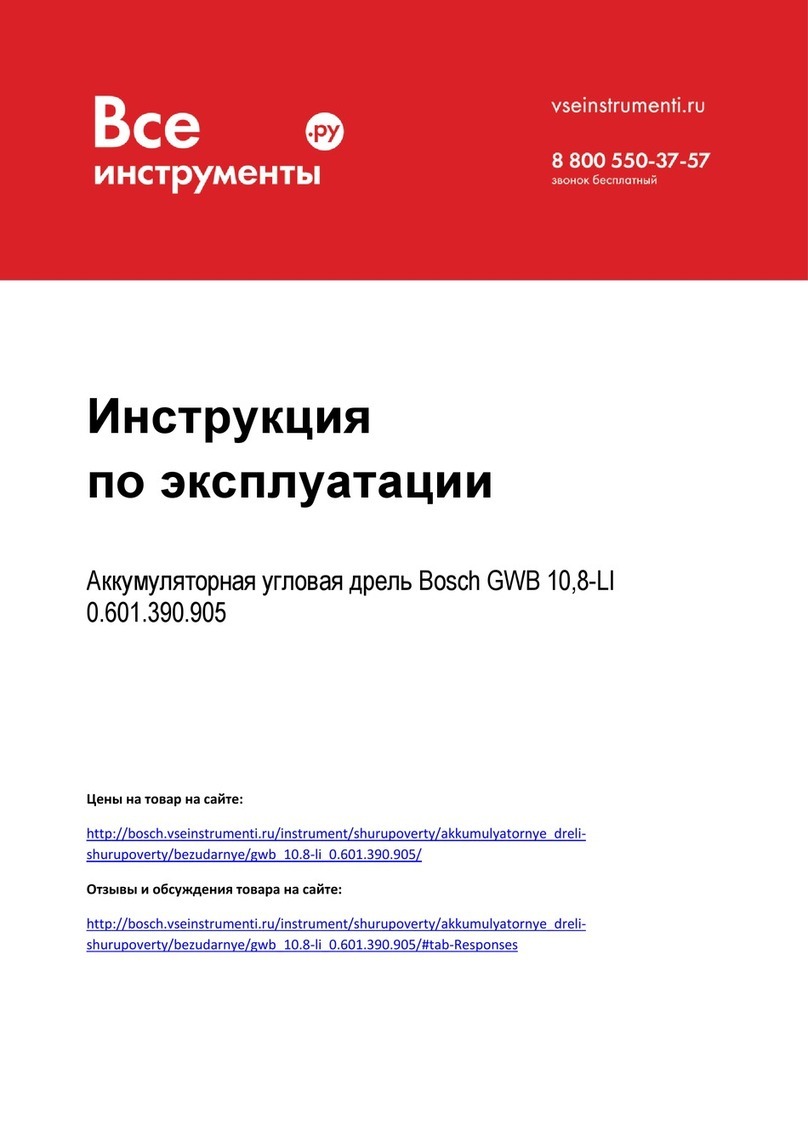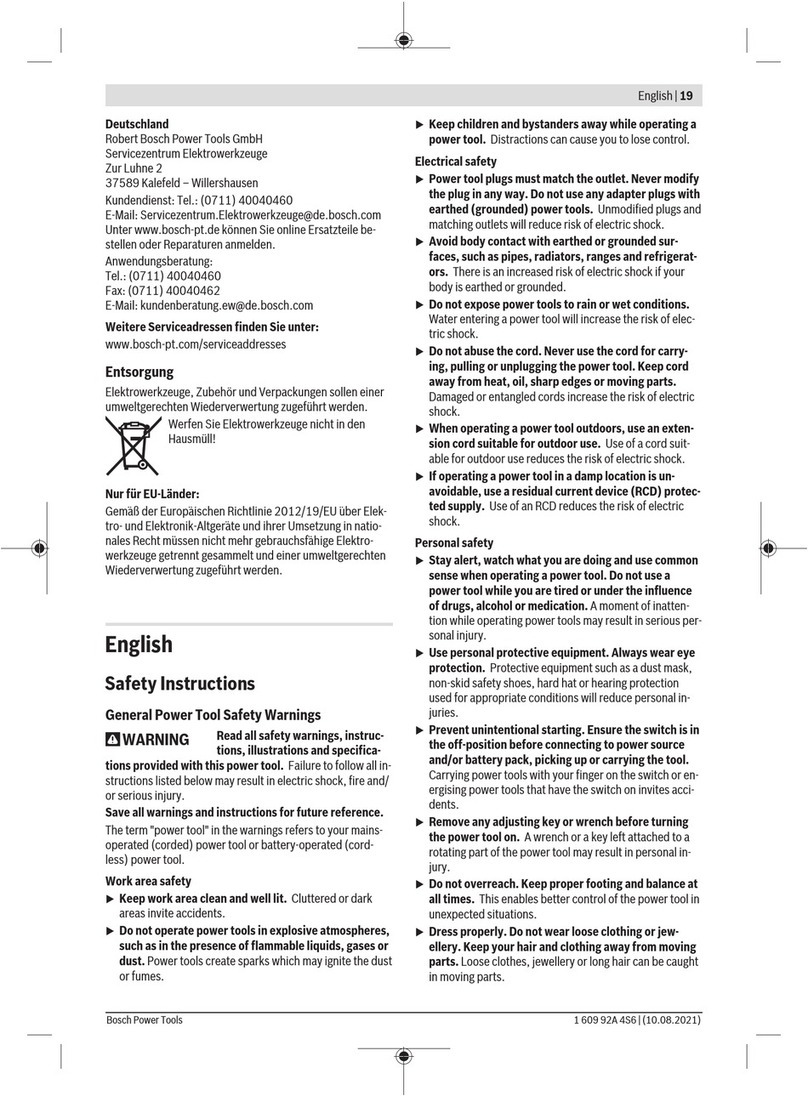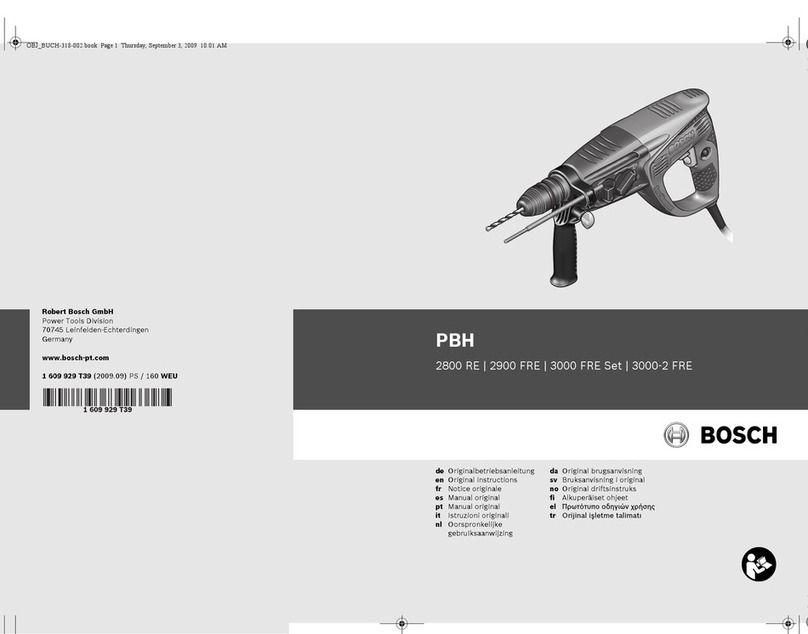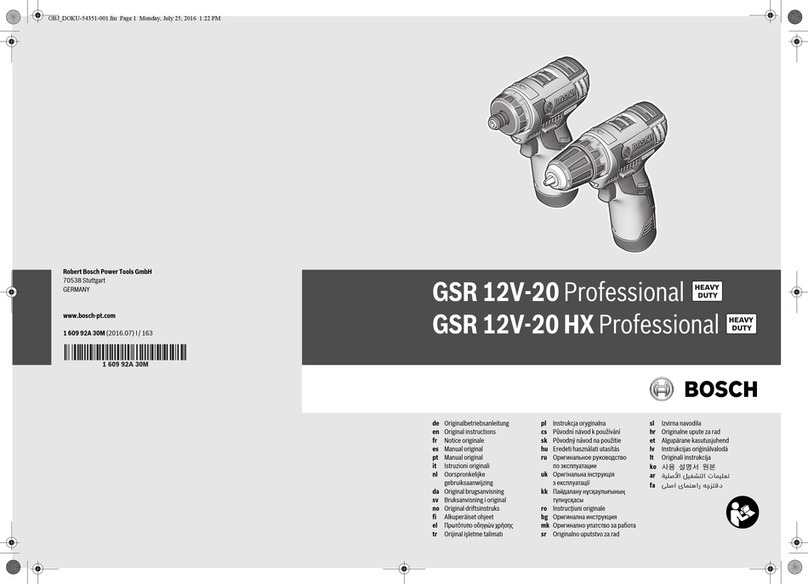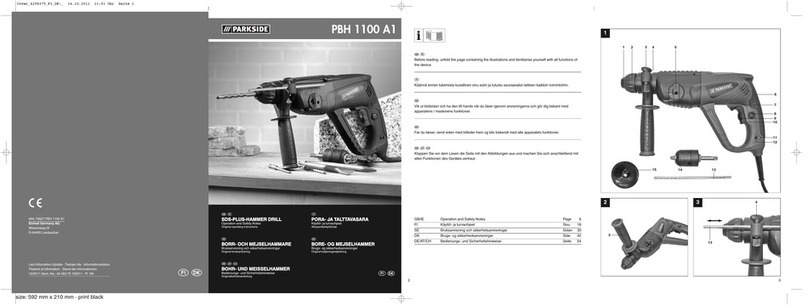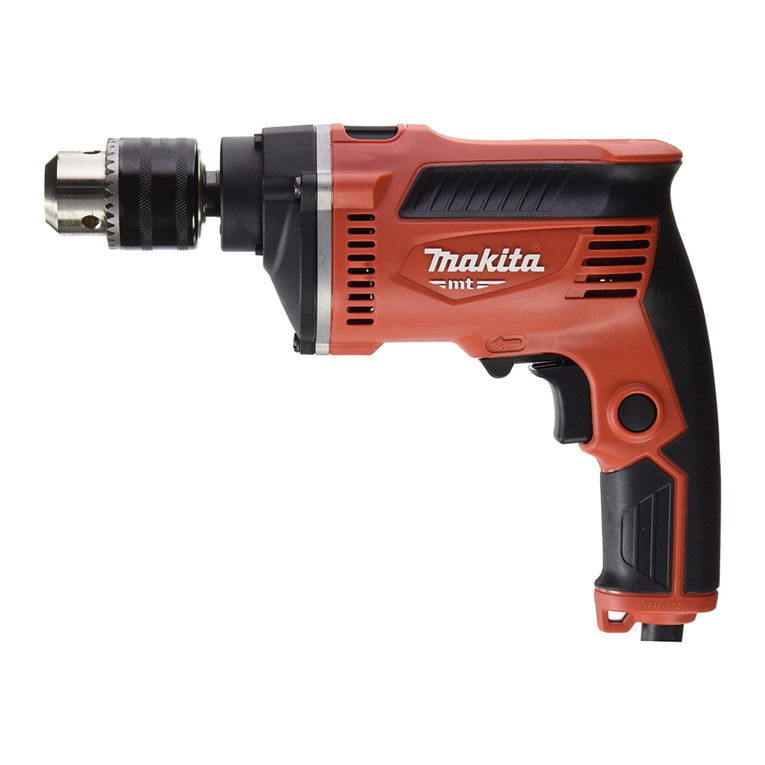
Deutsch | 7
Bosch Power Tools 3 609 929 C24 | (24.1.12)
ten Sie besser und sicherer im angegebenen
Leistungsbereich.
fBenutzen Sie kein Druckluftwerkzeug, dessen Ein-
/Ausschalter defekt ist. Ein Druckluftwerkzeug, das sich
nicht mehr ein- oder ausschalten lässt, ist gefährlich und
muss repariert werden.
fUnterbrechen Sie die Luftversorgung, bevor Sie Gerä-
teeinstellungen vornehmen, Zubehörteile wechseln
oder bei längerem Nichtgebrauch. Diese Vorsichts-
maßnahme verhindert den unbeabsichtigten Start des
Druckluftwerkzeugs.
fBewahren Sie unbenutzte Druckluftwerkzeuge außer-
halb der Reichweite von Kindern auf. Lassen Sie Perso-
nendas Druckluftwerkzeugnichtbenutzen, diemit die-
sem nicht vertraut sind oder diese Anweisungen nicht
gelesen haben. Druckluftwerkzeuge sind gefährlich,
wenn sie von unerfahrenen Personen benutzt werden.
fPflegen Sie das Druckluftwerkzeug mit Sorgfalt. Kon-
trollieren Sie, ob bewegliche Geräteteile einwandfrei
funktionieren und nicht klemmen, und ob Teile gebro-
chen oder so beschädigt sind, dass die Funktion des
Druckluftwerkzeugs beeinträchtigt ist. Lassen Sie be-
schädigte Teile vor dem Einsatz des Druckluftwerk-
zeugs reparieren. Viele Unfälle haben ihre Ursache in
schlecht gewarteten Druckluftwerkzeugen.
fHalten Sie Schneidwerkzeuge scharf und sauber. Sorg-
fältig gepflegte Schneidwerkzeuge mit scharfen Schneid-
kanten verklemmen sich weniger und sind leichter zu füh-
ren.
fVerwenden Sie Druckluftwerkzeug, Zubehör, Einsatz-
werkzeuge usw. entsprechend diesen Anweisungen.
BerücksichtigenSiedabeidieArbeitsbedingungenund
die auszuführende Tätigkeit. Damit werden Staubent-
wicklung,SchwingungenundGeräuschentwicklungsoweit
wie möglich reduziert.
fDas Druckluftwerkzeug sollte ausschließlich von quali-
fizierten und geschulten Bedienern eingerichtet, ein-
gestellt oder verwendet werden.
fDas Druckluftwerkzeug darf nicht verändert werden.
Veränderungen können die Wirksamkeit der Sicherheits-
maßnahmen verringern und die Risiken für den Bediener
erhöhen.
Service
fLassen Sie Ihr Druckluftwerkzeug nur von qualifizier-
tem Fachpersonal und nur mit Original-Ersatzteilen re-
parieren. Damit wird sichergestellt, dass die Sicherheit
des Druckluftwerkzeugs erhalten bleibt.
Sicherheitshinweise für Druckluft-
Bohrmaschinen
fKontrollieren Sie, ob das Typenschild lesbar ist. Besor-
gen Sie sich gegebenenfalls Ersatz vom Hersteller.
fBei einem Bruch des Werkstücks oder eines der Zube-
hörteile oder gar des Druckluftwerkzeugs selbst kön-
nen Teile mit hoher Geschwindigkeit herausgeschleu-
dert werden.
fBeim Betrieb sowie bei Reparatur- oder Wartungs-
arbeiten und beim Austausch von Zubehörteilen am
Druckluftwerkzeug ist immer ein schlagfester Augen-
schutzzutragen.DerGraddeserforderlichenSchutzes
sollte für jeden einzelnen Einsatz gesondert bewertet
werden.
fDie Bediener und das Wartungspersonal müssen phy-
sisch in der Lage sein, die Größe, das Gewicht und die
Leistung des Druckluftwerkzeugs zu handhaben.
fSeien Sie auf unerwartete Bewegungen des Druckluft-
werkzeugs gefasst, die infolge von Reaktionskräften
oder dem Bruch des Einsatzwerkzeugs entstehen kön-
nen. Halten Sie das Druckluftwerkzeug gut fest und
bringen Sie Ihren Körper und Ihre Arme in eine Positi-
on, in der Sie diese Bewegungen abfangen können. Die-
se Vorsichtsmaßnahmen können Verletzungen vermeiden.
fSchalten Sie das Druckluftwerkzeug sofort aus, wenn
das Einsatzwerkzeug blockiert. Seien Sie auf hohe Re-
aktionsmomente gefasst, die einen Rückschlag verur-
sachen. Das Einsatzwerkzeug blockiert, wenn:
– das Druckluftwerkzeug überlastet wird,
– es im zu bearbeitenden Werkstück verkantet oder
– es mit der Spitze durch den zu bearbeitenden Werkstoff
hindurchgeht.
fVerwenden Sie Hilfsmittel zur Aufnahme von Reakti-
onsmomenten, wie z.B. eine Abstützvorrichtung. Falls
dies nicht möglich ist verwenden Sie einen Zusatz-
handgriff.
fBringen Sie Ihre Hand nie in die Nähe sich drehender
Einsatzwerkzeuge. Sie können sich verletzen.
fBei einer Unterbrechung der Luftversorgung oder re-
duziertem Betriebsdruck schalten Sie das Druckluft-
werkzeug aus. Prüfen Sie den Betriebsdruck und starten
Sie bei optimalem Betriebsdruck erneut.
fBei der Verwendung des Druckluftwerkzeugs kann der
Bediener bei der Ausführung arbeitsbezogener Tätig-
keiten unangenehme Empfindungen in den Händen,
Armen,Schultern, im Halsbereich oderan anderen Kör-
perteilen erfahren.
fNehmen Sie für die Arbeit mit diesem Druckluftwerk-
zeug eine bequeme Stellung ein, achten Sie auf siche-
renHaltundvermeidenSie ungünstigePositionenoder
solche, bei denen es schwierig ist, das Gleichgewicht
zu halten. Der Bediener sollte während lang dauernder
Arbeiten die Körperhaltung verändern, was helfen
kann, Unannehmlichkeiten und Ermüdung zu vermei-
den.
fFalls der Bediener Symptome wie z. B. andauerndes
Unwohlsein, Beschwerden, Pochen, Schmerz, Krib-
beln, Taubheit, Brennen oder Steifheit an sich wahr-
nimmt, sollten diese warnenden Anzeichen nicht igno-
riert werden. Der Bediener sollte diese seinem
Arbeitgeber mitteilen und einen qualifizierten Medizi-
ner konsultieren.
fVorsicht! Einsatzwerkzeuge können bei längerem Be-
trieb des Druckluftwerkzeugs heiß werden. Verwenden
Sie Schutzhandschuhe.
OBJ_BUCH-1540-001.book Page 7 Tuesday, January 24, 2012 12:34 PM
ТАШЕВ-ГАЛВИНГ ООД
www.tashev-galving.com



